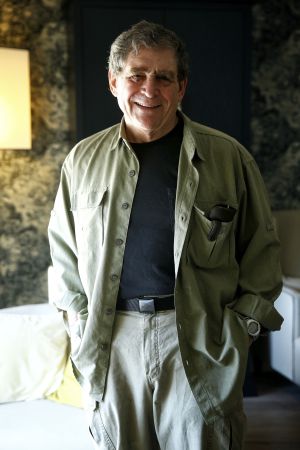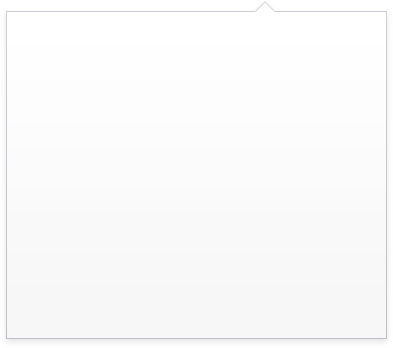We can't just keep talking about it. We have to take real steps!
After 2015 World Leaders' Conservation Forum (held by Jeju-do, Ministry of Environment, and IUCN) on July in Jeju, Daejayon had a second meet with Alan Weisman, a world-famous journalist, who visited Korea for HR Forum.
Who is Alan Weisman?

Alan Weisman is a famous journalist, professor of international journalism, American writer who has won many prizes.
His book ‘The World without Us’ was published through 20 countries around the world, and became the long-run bestseller of The New York Times and Amazon. Also, this book was turned into a movie by National Geographic.
He has contributed to ‘Harper’, ‘The New York Times’, ‘Atlantic Monthly’, ‘National Public Radio’, and ‘American Public Media.’
Also he works as a radio documentary producer of Homeland Production.
His main publications are ‘Gaviotas: A Village to Reinvent the World’, The World Without Us’ and ‘Countdown : our last, best hope for a future on earth?’
Daejayon had a long conversation with him, talking about the issue of population, environment, and women education. We agreed with his idea that endeavors for environment along with stabilization of population is compulsively needed.
He pointed out the environment destroyed by a number of people and seriousness of CO2 emission, saying that he had written the book ‘World without Us’ with a mind eagerly hoping ‘the world with us.’
Daejayon: You wrote about the population shocks, but we usually come up with decreasing energy consumption, energy efficiency and renewable energy when we think environment protection. It seems that you are the first one who emphasized the population problem. Where did you get this idea?
Alan Weisman: I interviewed someone for The world without us, who promoted voluntary human extinction on this planet because we are driving so many species off. We are going to eventually lose the base that allows us to survive, so our own extinction is certain.
He suggested no more procreation, and then we will be gone in a hundred years but at least we won't have brought a lot of other species with us, and he said to me, think of it, every decade when there are fewer people on planet the world will become more natural, more beautiful, there will be more space for wildlife, and the very less people on earth.
And then.. it will be over and other species will have survived, so the life can go on. and when he said that, I realized two things, that was very similar to the idea of my book World Without Us. I was really writing that book because I want the world with us. So that's why I wen to the United Nations and they gave me this huge figure 83 million. and my mind isn't big enough for the 83 million. But when I did long division by 365, I realized every 4 day we had million more people. That's why I started to thinking about population.
If we started tomorrow with all renewable energy, we still be increasing the amount of carbon dioxide. The fastest thing that I know that we can do, I mean we have to try, we have to do all with that you are doing, but we also have to bring down population. there's no other way.
Nature will never let any species exceed its limits very long before it brings population down. I would rather that we take control all of this.
Daejayon: What is the appropriate number of population you estimate?
Alan Weisman: I don’t estimate. I am just a journalist who talk to many people. And interestingly enough, the estimates all came out about to be same from very different directions. When you talk about how much carbon dioxide can the atmosphere absorb without radically changing, and the seas conceive safely absorb and the atmosphere without their chemistry changing.
A prominent scientist in the united states one of the first ones to identify the problem of increasing of carbon dioxide. and I'll tell the story in Countdown. Get a calculation of what will happen, what is the minimum amount of energy using maximum efficiency, and also maximum justice in distributing that energy So everybody on earth, had a reasonably good life style. And, the calculation, gave a number that turns out that it would be one and half of two billion, maybe a little over 2 billion people, if we got really good. Now it is 7.3 billion, and we are headed to nearly 10 billion by the middle of the century, more than 11 billion by the end of the century.
Now another calculation is you have to understand that all of this food production. All of this food production is depended on chemistry. We have chemically forced that the soil to produce more food. Nitrogen fertilizer or all those plants from green revolution, they were developed in a laboratory, not in nature. so they need unnatural protection. pesticide, herbicide, fungicide. poisons. people who deny climate change? How can they deny it?
But still, we deny that every time we eat food that, when you put poison on food, we believe somehow that we only it poisons organisms we don't like, but it doesn't hurt other organisms including ourselves. so now so many other diseases that we are saying, cancers, diabetes, cognitive problems, autism, are related to pesticides. This is really well known. and I have already explained what nitrogen does the plant.
So we can't keep living that way. Eventually It's going to kill off much of this planet. And that's just something that I don't know any other answer to that bringing our numbers down. So another way of answering your question, is to think of how many people were on this planet before we started using all this chemistry. well, nitrogen fertilizer was invented just before world war 1. and it stated being used after the war, in the 1920's, but it didn't really hit a commercial scale level until 1930. What was the population in 1930? 2 billion. So, that's probably safe. Now how do we eliminate 4/5 of people on the planet? Well, we do it gradually. Over 2,3 generations, we bring our population down until we get to a safe level.
Reducing the population is, of course, an opinion of Alan Weisman, but it is a good time to emphasize with the importance of environmental protection and to realize that many people has done their best in the own field.
A Message Alan Weisman Sends to the Members of Daejayon
As *one little Pakistani girl, who was shot her head, brought a worldwide sensation of women education, you can encourage the worldwide (environmental) movements. What else we need if students press each government to cease its CO2 emission, millions and billions of young adults talk with leaders and let each other know? It will change the world and it is the thing that the students of Daejayon can do right now. University students are all intelligent. You can do it.
* A little Parkistani girl shot in the head
Malala Yousafzai (a human right activist for Pakistani students, youngest person to win the Nobel Peace Prize)
She was shot by Taliban and fell into a critical condition, when she filed a complaint against reality of oppressed women education and asserted the education right for them. Due to this incident, the women education of Pakistan became the focus of the public attention of the world, and Malala became the 2nd of ‘Most intriguing people of 2012’, following the US President Barack Obama. The women education movement came to arise in Pakistan and 2 million people participated to a signature campaign. The government passed the bill of education right. A campaign starting with a slogan ‘I am Malala’ led by Gordon Brown, a former Prime Minister of England and global special envoy of UN, has spread all over the world. Malala has been spreading movement for women education and children education after her recovery despite continuing death threat.


 2
2
 3
3 2
2 1
1